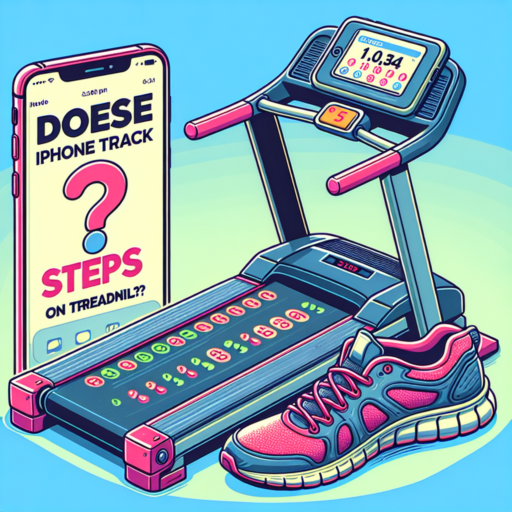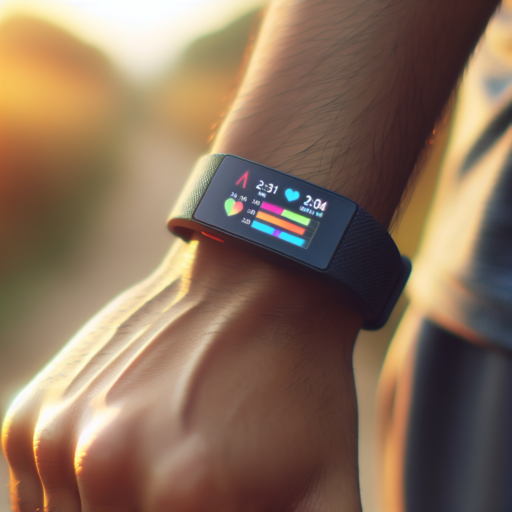What is an Active Calorie Counter and How Does It Work?
An Active Calorie Counter is a specialized tool designed to track the number of calories burned through various activities and exercises throughout the day. In the era of health consciousness and fitness tracking, these counters have become an indispensable companion for individuals aiming to maintain a healthy lifestyle or achieve specific fitness goals. Utilizing advanced technology, such as sensors and software algorithms, active calorie counters measure and analyze the intensity and duration of physical activities to calculate the energy expenditure accurately.
The underlying technology of an Active Calorie Counter involves a combination of accelerometers, heart rate monitors, and sometimes even GPS tracking to ensure a comprehensive analysis of physical activity. These devices or applications process the data collected to estimate the amount of energy burned. For instance, by monitoring your heart rate and movements during a run, the counter can determine not just the distance covered but also the effort expended, translating it into calories burned. This dynamic approach allows for a more personalized and accurate measurement of physical activity compared to traditional methods.
Operationally, Active Calorie Counters often come in the form of wearable devices, such as fitness bands and smartwatches, or as mobile applications. Users can set up their profiles, entering vital information such as age, weight, height, and activity level, which the software uses to refine its calorie burn estimations. Through regular updates and syncs, the counter provides real-time feedback and historical data analysis, enabling users to track their progress, set goals, and adjust their exercise routines for optimized results. Whether aiming to lose weight, build muscle, or simply stay active, these counters offer tailored insights into how every movement contributes to overall calorie expenditure.
The Best Active Calorie Counters of 2023
Finding the best active calorie counters in 2023 can empower individuals to track their daily caloric burn more effectively, aiding in both weight management and overall health improvement. As technology evolves, so do the features and accuracy of these devices, making it easier for anyone to stay on top of their health and fitness goals. From wearable gadgets to sophisticated mobile apps, the variety of options available today means there’s a solution for every lifestyle and preference.
One of the key factors to consider when selecting a calorie counter is the level of activity you regularly engage in. For those who lead a highly active lifestyle, a wearable device that integrates heart rate monitoring could be ideal. These devices not only track the calories you burn during specific workouts but also monitor your resting metabolic rate, giving you a comprehensive view of your daily energy expenditure. They often come with additional features such as water resistance, making them perfect for swimmers and triathletes.
For individuals who prefer a less intrusive method of tracking, smartphone apps offer substantial benefits. Many of these apps use sophisticated algorithms to estimate calories burned based on the duration and intensity of various activities. They can be paired with wearables for more accurate tracking or used independently for those who prefer not to wear a device. Furthermore, these apps often come with the added bonus of nutritional tracking, allowing users to log their food intake alongside their activity levels, offering a holistic view of their health.
Active Calorie Counters: Apps vs. Wearables
In the quest for a healthier lifestyle, keeping track of calories burned through physical activity is pivotal. The digital age has presented us with two prominent tools: calorie counting apps and wearable devices. Each has its unique strengths and weaknesses, which vary according to the user’s needs and lifestyle preferences.
Accuracy and Ease of Use
When it comes to accuracy, wearables often have the upper hand. Equipped with sensors, they monitor your heart rate, steps, and sometimes even your sleep, providing a comprehensive picture of your daily calorie expenditure. Apps, however, largely rely on user input, which can result in inaccuracies if not updated faithfully. Nonetheless, apps can be incredibly user-friendly, offering a straightforward platform for tracking food intake and exercise, making them accessible to virtually anyone with a smartphone.
Cost and Accessibility
Another factor to consider is cost. Wearable devices can be an investment, with prices ranging significantly based on the brand and functionality. Conversely, many calorie counting apps are free or offer basic versions at no cost, which is particularly appealing for budget-conscious individuals. Accessibility also plays a crucial role; while wearables offer real-time tracking, they require being worn consistently. Apps can provide more flexibility, as they can be used as long as you have your phone.
Deciding between an app or a wearable comes down to personal preference, lifestyle, and goals. Each offers its unique benefits, whether it’s the comprehensive tracking from a wearable device or the convenience and affordability of an app. Engaging with either can be a step towards a healthier and more aware lifestyle.
How to Accurately Track Your Calories Burned
Tracking calories burned is crucial for anyone looking to manage their weight, improve fitness, or simply gain a better understanding of their daily energy expenditure. A precise measure of the calories you burn can significantly enhance your ability to reach fitness goals efficiently. However, with so much information and so many tools available, pinpointing the most accurate method can be a daunting task. Let’s dive into some proven strategies and tools that can help you track your caloric burn more accurately.
Utilize Wearable Technology
Advancements in wearable technology have revolutionized how we can monitor our physical activities and the calories burned. Devices such as fitness trackers and smartwatches come equipped with sensors that track your heart rate, steps taken, and even the intensity of your activity. By taking these metrics into account, these devices can give you a more accurate estimate of the total calories burned throughout your day. It’s important to choose a device that aligns with your primary activities and to regularly update its settings for the most accurate readings.
Engage with Fitness Apps
Fitness apps are another excellent resource for tracking calories burned. Many apps allow you to log different types of activities, from standard exercises like running and cycling to household tasks and leisure activities. By inputting the duration and intensity of your activities, you can obtain a personalized estimate of calories burned. Furthermore, some apps can synchronize with your wearable devices, providing a comprehensive overview of your daily caloric burn and helping you to adjust your fitness regime accordingly.
Remember, the key to accurately tracking calories burned lies in the consistency of the method you choose. Whether through wearable technology, fitness apps, or both, maintaining a diligent and honest recording of your activities will always yield the best results. By paying close attention to the details of your physical activities, you can fine-tune your fitness strategy for optimal health and performance.
Maximizing Your Workouts with Active Calorie Counting
Active calorie counting isn’t just about monitoring what you eat; it’s an essential strategy for enhancing your fitness routine. By understanding and tracking the number of calories you burn during exercise, you can tailor your workouts to meet your specific fitness goals more effectively. Whether your objective is weight loss, muscle building, or improving endurance, knowing your active calorie burn can make all the difference.
One of the first steps in leveraging active calorie counting for workout optimization is understanding the differences in calorie expenditure across various exercises. High-intensity interval training (HIIT), for instance, not only burns a significant amount of calories during the session but also increases your metabolic rate for hours after you’ve finished. On the other hand, activities like yoga or Pilates focus more on flexibility and strength, with a moderate calorie burn rate that suits different fitness objectives.
To maximize your workouts with active calorie counting, begin by setting clear, measurable goals. If your aim is fat loss, focus on activities known for their high caloric burn like running, cycling, or swimming. Incorporating strength training into your routine is also crucial, as building muscle increases your resting metabolic rate, thereby boosting the number of calories you burn while at rest. By aligning your exercise choices with your calorie burn goals, you can create a more efficient, goal-oriented fitness plan.
The Science Behind Active Calorie Counting
Active calorie counting is a pivotal component in the realm of weight management and overall health maintenance. This method not only focuses on the calories consumed but also takes into account the calories expended through physical activity and basic metabolic functions. The principle that governs this method is rooted in the balance between energy intake and energy expenditure. By maintaining a diary or utilizing digital tools to monitor these elements, individuals can gain a comprehensive understanding of their caloric balance.
Experts emphasize that active calorie counting is significantly enhanced by incorporating metabolic rate calculations and the thermic effect of food (TEF). Metabolic rate, which consists of basal metabolic rate (BMR) and total daily energy expenditure (TDEE), is crucial in determining the amount of energy your body consumes at rest and throughout different activities. Meanwhile, the TEF accounts for the energy expended during the digestion, absorption, and distribution of nutrients. These factors combined offer a more precise approach to calorie counting, guiding individuals towards more informed nutritional choices and activities.
Incorporating exercise into one’s daily routine is another key element in active calorie counting. Activities vary in intensity and duration, influencing the number of calories burned. High-intensity interval training (HIIT), for instance, may burn a significant number of calories in a short period, while longer, moderate activities like walking or yoga contribute to caloric expenditure in a different manner. Understanding the impact of varied physical activities aids in tailoring a fitness regime that aligns with individual calorie management goals.
Active calorie counting represents a blend of science and personalized strategy, encouraging a balanced approach to nutrition and fitness. This dynamic method underscores the importance of being mindful of both intake and output, offering a path towards achieving and maintaining optimal health.
Integrating an Active Calorie Counter into Your Fitness Routine
Integrating an active calorie counter into your fitness routine is a transformative step towards achieving your health and fitness goals. By meticulously tracking the calories you burn during each workout, you not only gain insight into your physical activities but also ensure you are on the right path to reaching your objectives. An active calorie counter offers a detailed approach, enabling you to adjust your exercise regimen based on accurate data rather than guesswork.
The incorporation of a calorie counter helps in personalizing fitness routines to match individual energy expenditure. For instance, if you engage in various activities, from brisk walking to high-intensity interval training (HIIT), an active calorie counter distinguishes the energy used in each, providing you with the knowledge to fine-tune your exercises. This specificity encourages a more focused and efficient fitness journey, where every step, jump, or pedal is accounted for towards burning calories.
Moreover, an active calorie counter can serve as a motivational tool. Seeing the actual calories burned after each session can foster a sense of achievement and progress. It pushes individuals to set new targets and challenges, maintaining the excitement and engagement in their fitness routines. This dynamic adaptability and feedback mechanism help to sustain long-term fitness commitments, making workouts more enjoyable and rewarding.
No se han encontrado productos.
Understanding the Difference: Active Calorie Counter vs. Passive Calorie Tracking
In the quest for fitness and weight management, two popular methodologies for monitoring calories emerge: active calorie counter and passive calorie tracking. Recognizing the distinction between these two can significantly influence an individual’s approach to health and fitness goals. Active calorie counting involves manually logging every calorie consumed and burned throughout the day. This method demands a high level of engagement and awareness from the user, encouraging a more conscious decision-making process regarding food intake and physical activity.
Conversely, passive calorie tracking represents a less hands-on approach. With the aid of technology, such as wearable devices and mobile apps, this method automatically records calories burned based on one’s daily activities and metabolic rate. It often requires the user to provide initial basic information like age, weight, height, and activity level, after which the technology takes over to estimate calorie expenditure. This approach is favored for its convenience and for providing a general overview of one’s caloric burn without the need for constant manual input.
Both methods have their merits and can cater to different user preferences and lifestyles. Active calorie counters offer precision and can foster a deeper understanding of the relationship between diet, exercise, and body weight. On the other hand, passive tracking suits those seeking a more effortless way to stay informed about their calorie expenditure, possibly motivating regular physical activity without the intricacy of detailed logging.
FAQs: Common Questions About Using an Active Calorie Counter
Many people embarking on their fitness journeys often find themselves puzzled by the intricacies surrounding active calorie counters. These digital companions are pivotal in tracking our energy expenditure, yet, their practicality raises a multitude of questions. Below, we address some of the most pressing inquiries that users frequently pose.
How Accurate Are Active Calorie Counters?
Accuracy in active calorie counters can vary significantly across different brands and models. Generally, devices that monitor heart rate alongside movements tend to offer a closer estimate of actual calories burned. However, it’s key to note that individual differences in metabolism and body composition can affect these readings, making them estimations rather than precise figures.
Can I Sync My Active Calorie Counter With Other Fitness Apps?
Most modern active calorie counters are designed to be compatible with a wide range of fitness apps. This synchronization allows for a more holistic view of your health and fitness journey, by combining calorie expenditure with dietary intake, sleep patterns, and other physical activities. Checking the compatibility of your device with your preferred apps before purchasing is always a good practice.
Do I Need to Wear My Calorie Counter All Day?
For those aiming for an accurate picture of their daily calorie expenditure, wearing your active calorie counter throughout the day is advisable. Continuous wear helps in collecting data on not just your workout sessions, but also the calories burned during passive activities like walking, standing, and even sleeping. This comprehensive data collection aids in tailoring your fitness and nutritional plans more effectively.
Tips for Choosing the Right Active Calorie Counter for Your Lifestyle
Choosing an active calorie counter that aligns with your lifestyle is crucial for achieving your fitness goals. It’s not just about tracking the number of calories you consume, but also understanding how different activities contribute to your overall calorie burn. In this context, several tips can guide you towards selecting a tool that caters specifically to your needs.
Evaluate Your Daily Activities
First and foremost, consider the types of activities you engage in on a daily basis. Whether you’re an avid runner, a yoga enthusiast, or someone who enjoys brisk walks, your calorie counter should be able to accurately track the calories burned during these specific activities. Look for a calorie counter that offers a wide range of activity settings or allows for custom entries to ensure all your movements are accounted for.
Compatibility with Other Devices
In today’s interconnected world, the ability of your calorie counter to sync with other devices can be a game-changer. Whether it’s your smartphone, fitness tracker, or smartwatch, choosing a calorie counter that integrates seamlessly with your existing gadgets will provide a more holistic view of your fitness journey. This interconnectivity enables a more accurate and comprehensive tracking system, making it easier to stay on top of your goals.
Remember, the best active calorie counter for you is one that fits effortlessly into your lifestyle. It should not only be accurate and comprehensive but also motivating and easy to use. By considering these aspects, you’ll be well on your way to finding a calorie counter that helps you understand and improve your fitness regime.




